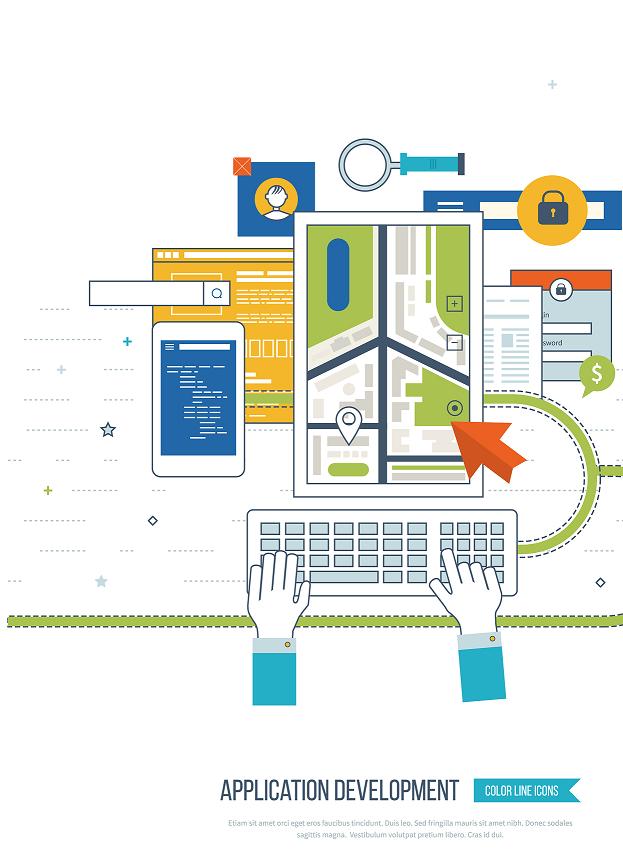E-commerce is fueled by innovative insights that characterize today’s mobile application development. Right now, the maxim of every mCommerce development project is to design immersive user experience so that an app gains the highest traction in the shortest turnaround.
Customers, these days, find it more convenient to shop from mobile platforms. And the key reason is that it is a whole lot convenient to shop using a mobile phone or a smart device because it allows shoppers to be agile.
The mobile drives today’s e-commerce needs
Among the many e-commerce features, mobile has gained a lot of prominence in a short span of time. Because of its ubiquity, mobile has indeed become a key force that is driving the next-generation e-commerce sector. Further, the rising number of smartphones is indeed leading to the development of e-comm
erce apps that have premium mobility in them.
In February 2016, Criteo published a research report where it presented its finding of the analyses it has done of all the shopping data sets. The key takeaways from that report are given below:
- Four out of ten retail transactions were initiated on multiple devices, but they ended through mobile devices only.
- Top retail brands view that the growth in mobile transactions will be higher when it is compared with that of the transactions happening through desktops.
- Dedicated mobile apps always bring down the sales taking place from a mobile website or a desktop website.
- The U.K., Japan, and South Korea continue to maintain a pole position when it comes to performing global retail transactions.
- Mobiles and smartphones are more frequently used when they are compared with the use of tablets in different countries.
So the bottom line is that whether a business is managed single-handedly or it is having a dedicated team to manage its digital marketing strategies, mCommerce development strategies have to be in place. For this purpose, here is a post that outlines all the factors that explain the significance of mobile application development.
Prioritized user preferences
A report was published on user preferences, and it observed that close to 89 percent of a consumer’s media time is spent on mobile apps; while merely 11 percent of consumers rely on mobile web for satisfying their browsing needs.
Users are doubtless adopting cutting-edge mobile opportunities for searching and shopping. And there is indeed a perceptible change that clearly shows how the consumers are approaching mobile shopping nowadays.
Further, with the boom of smartphones and tabs, consumers have to multitask every time. People have to work at odd times, and they need to do the tasks away from their workstations and from their home desktops. For this purpose, a consumer relies on mobile devices because they offer unparalleled ease and matchless efficiency. And because of so many benefits for a consumer, mobiles and smart devices offer a lot of opportunities for retail outlets.
Smart push notifications
The use of mobile apps is indeed the finest way for a business to remain in touch with its users, and vice versa. And one of the most rewarding features of a mobile app is its push notification. Through this special feature, a business can introduce promotions and other offers to users by posting simple messages.
In short, with such push notifications, the app users will get to see such messages without even opening the app. Which is why, push notifications are often considered to be among the effective ways of improving the Click-Through Rates (CTRs). A new data report published by Kahuna Inc. states that there is a fixed 40 percent CTR delivered by well-designed push notifications.
So a smartly designed push notification is liable to reach the users better and keep them engaged come what may. And this implies, every deftly designed CTR will be able to understand users, propel sales, and ultimately deliver better value. However, if the push notifications are overplayed, they will easily annoy users/prospects.
Unequaled convenience
Accessing a retail store through apps is free of any hassles. Consumers find it easier, quicker, and stylish to access their favorite shopping apps via their mobile phones. When the users are accessing the contents of a retail outlet via its app, they will be just a click away to explore the best deals and offers.
Plus, thanks to Big Data, apps have intrinsically become smatter as they can show products that are based on user preferences and behaviors. And if the apps are designed well, they will easily deliver two important ingredients that are hard to find on run-of-the-mill websites; these ingredients are improved user experience and a flawless performance.
A well-designed app can even be a relationship manager between users and brands. These programs can lead to building a loyal user base for businesses. The retail outlets having apps can easily reward mobile app users via great deals and hefty discount coupons. The report published by Adobe says that nearly 67 percent of mobile shoppers use applications of their favorite bands.
Improved usability
When it is about downloading a digital commerce app, it is just a one-time thing. Also, apps are quicker when they are compared with their web counterparts that generally take some time to load. Further, apps can even improve interactivity by offering features such as:
- High-definition images
- Sophisticated interactions
- The inclusion of a range of cutting-edge animations
Further, apps are very easy to customize; so their functionality can be improved every time. The usability of an app can be enhanced by adding gamification that is unique and that increases the engagement and the interactivity between the brand and its users.
So after reading all these factors, mobile apps have to be the linchpin of mobile strategies that businesses devise. Regardless of having a responsive website, a retail outlet has to invest prudently in mobile application development if it wishes to position itself as a greater brand and a better market player.


 admin
admin


